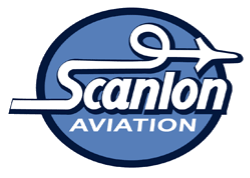Cirrus Training Programs
As a pilot or true aviation enthusiast, there are some things in your flying life that shouldn’t wait; at the top of the list is the Cirrus experience!
The Cirrus Life
You can’t compare flying in a Cirrus aircraft to anything else you might have experienced. You don’t “climb in” a Cirrus, you kind of slip into it, like that feeling you get when you put on a comfortable, well tailored suit or, if you like, a pair of shorts and flip flops!
The aircraft just fits; it’s a matter of Cirrus applying ergonomics to the design of the aircraft. Ergonomics: “the applied science that coordinates the design of devices or systems and physical working conditions with the capacities and requirements of the machine and the worker.”
In plain language the “machine” is the Cirrus aircraft. For example when you, “the worker” move your left hand to the side stick to control the aircraft, it falls naturally where it was designed to fall.
When you think about making a power change, your hand moves easily and naturally to the throttle quadrant; it’s as if the aircraft designers anticipated how you would move.
The instrumentation, the PFD, the Primary Flight Display and the MFD, the Multi Function Display are “there”, where they were crafted to be, where your eyes naturally look.Things are where you need them to be to make it easy to do your job as pilot in command efficiently, easily, intuitively, safely.
Cirrus Training Programs
Transition Training: For pilots new to the Cirrus or for pilots who have upgraded to a different airframe and avionics suite.
Advanced Transition Training: Is for the instrument-rated and proficient pilot. This course is intended to provide training for the pilot who wants to take advantage of the full IFR capability of the Cirrus aircraft through a course that specifically combines the transition training with the elements of an instrument proficiency check.
Avionics Differences Training: Is for the pilot transitioning to a new avionics suite or the pilot needs a more in-depth experience of their avionics capability. You will be trained in the standardized Avidyne and Perspective Avionics equipment.
Airframe and Powerplant Differences Training: Is for the pilot moving into a different airframe/powerplant with performance differences substantial enough that training is strongly suggested or required by insurance and/or rental agreement.
Recurrent Training: Is recommended for all pilots regardless of how often they fly. The 6-month Recurrent Check cycle is offered and encouraged.
Flight Review: Every 24 calendar months, all pilots are required to complete a Flight Review. This review must include a minimum of one hour of flight and one hour of ground training. Our instructor’s thorough knowledge of the Cirrus aircraft can refresh your memory on all the systems, maneuvers, and emergency procedures which are crucial to pilot proficiency.
Instrument Proficiency Check: Should you need it, we will familiarize you with all the useful functions of your autopilot or GPS. Let our expert instructors help you maintain proficiency with one of the most advanced aircraft in the General Aviation world.
